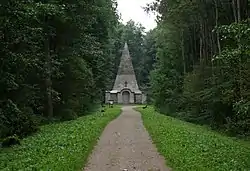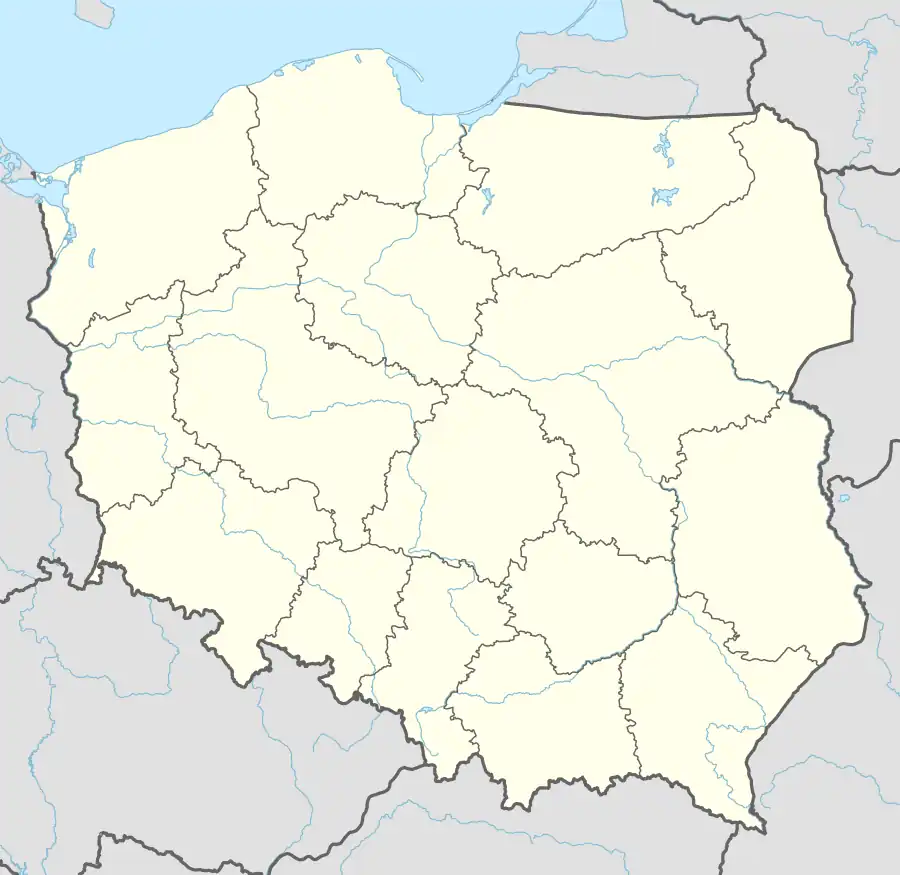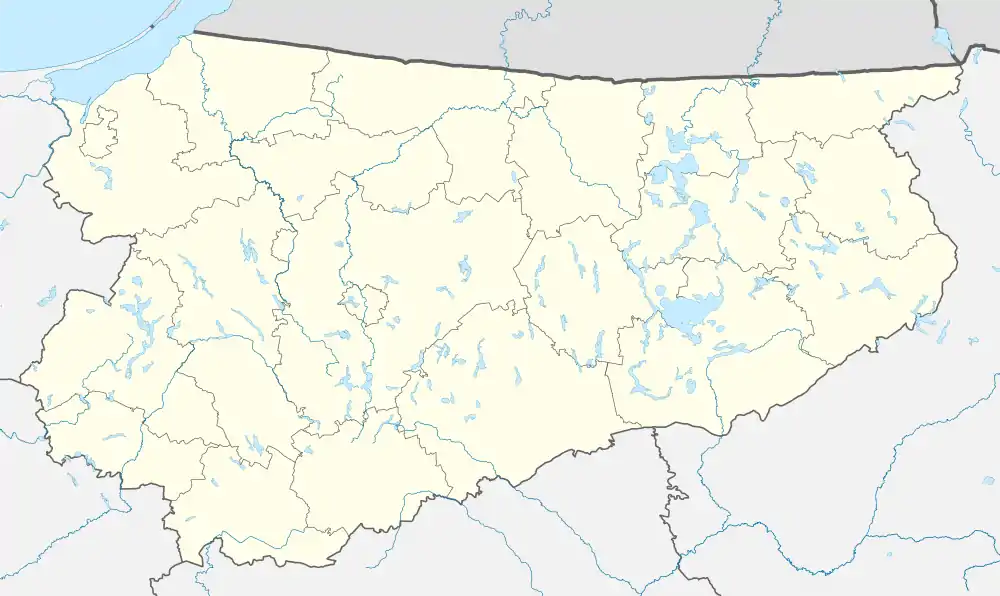Rapa, Poland
Rapa ([ˈrapa]) is a village in the administrative district of Gmina Banie Mazurskie, within Gołdap County, Warmian-Masurian Voivodeship, in northern Poland, close to the border with the Kaliningrad Oblast of Russia.[1] It lies approximately 9 kilometres (6 mi) north of Banie Mazurskie, 20 km (12 mi) west of Gołdap, and 116 km (72 mi) north-east of the regional capital Olsztyn.
Rapa | |
|---|---|
Village | |
 Rapa Pyramid | |
 Rapa  Rapa | |
| Coordinates: 54°19′N 22°1′E | |
| Country | |
| Voivodeship | Warmian-Masurian |
| County | Gołdap |
| Gmina | Banie Mazurskie |
| Time zone | UTC+1 (CET) |
| • Summer (DST) | UTC+2 (CEST) |
| Vehicle registration | NGO |
History and pyramid
In the past, the region was at various times part of Poland, Prussia and Germany. The village existed in the early seventeenth century. In 1750, the owner Jacob John Hoffmann built a palace, taken in 1793 by Johann Friedrich Wilhelm von Fahrenheid.
In 1811, a mausoleum was built in Rapa for the Fahrenheid family, designed by sculptor Bertel Thorvaldsen. The building is shaped like a pyramid with a height of 15.9 metres (52 ft) and is loosely inspired by the architecture of ancient Egypt. The family members buried there were mummified. In 1945, the mausoleum was severely damaged by soldiers of the Red Army.[2]
In 1938, during a massive Nazi campaign of renaming of placenames the village was renamed to Kleinangerapp. It became again part of Poland following Germany's defeat in World War II in 1945.
References
- "Central Statistical Office (GUS) – TERYT (National Register of Territorial Land Apportionment Journal)" (in Polish). 2008-06-01.
- "Piramida w Rapie, Rapa , mumie z Rapy....grobowiec rodziny von Farenheidów". Archived from the original on 2012-07-25. Retrieved 2012-06-26.